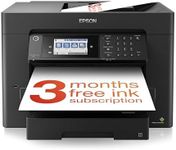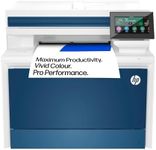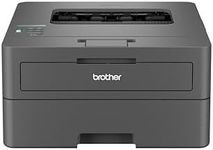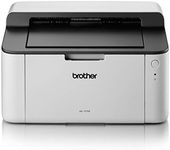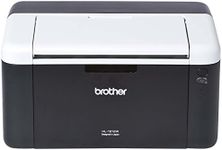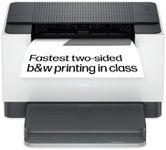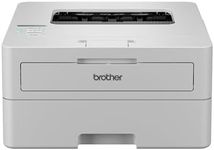Buying Guide for the Best Budget Laser Printers
When choosing a budget laser printer, it's important to focus on the features that will best meet your printing needs while ensuring cost-effectiveness. Laser printers are known for their speed, precision, and efficiency, making them ideal for both home and office use. However, even within the budget category, there are several factors to consider to ensure you get the best value for your money. Understanding these key specifications will help you make an informed decision.Print SpeedPrint speed, measured in pages per minute (PPM), indicates how fast a printer can produce pages. This is important if you need to print large volumes quickly. Budget laser printers typically range from 20 to 30 PPM. If you print frequently or in large batches, opt for a higher PPM. For occasional or light use, a lower PPM will suffice and may save on costs.
Print QualityPrint quality is determined by the printer's resolution, measured in dots per inch (DPI). Higher DPI means better print quality, which is crucial for documents with graphics or fine details. Budget laser printers usually offer 600 to 1200 DPI. If your primary need is text documents, 600 DPI is adequate. For more detailed graphics, consider a printer with 1200 DPI.
Connectivity OptionsConnectivity options determine how you can connect your devices to the printer. Common options include USB, Wi-Fi, and Ethernet. Wi-Fi connectivity is useful for wireless printing from multiple devices, while USB is straightforward for direct connections. Ethernet is ideal for networked office environments. Choose based on your setup: Wi-Fi for flexibility, USB for simplicity, and Ethernet for shared office use.
Paper HandlingPaper handling refers to the types and sizes of paper a printer can accommodate, as well as the capacity of its paper tray. This is important if you need to print on different media types or in large volumes. Budget printers often handle standard letter and legal sizes with a tray capacity of 150-250 sheets. If you print on specialty media or need higher capacity, ensure the printer supports these needs.
Operating CostsOperating costs include the price of toner cartridges and the printer's energy consumption. This is crucial for long-term affordability. Toner costs can vary, so check the price and yield (pages per cartridge) to estimate ongoing expenses. Energy-efficient models can also reduce electricity bills. Consider your printing volume to balance initial savings with long-term costs.
Duplex PrintingDuplex printing allows a printer to automatically print on both sides of a page, saving paper and time. This feature is beneficial for high-volume printing and environmentally conscious users. Not all budget printers have automatic duplexing, so if this is important, ensure the model supports it. For occasional use, manual duplexing (flipping pages yourself) might be sufficient.
